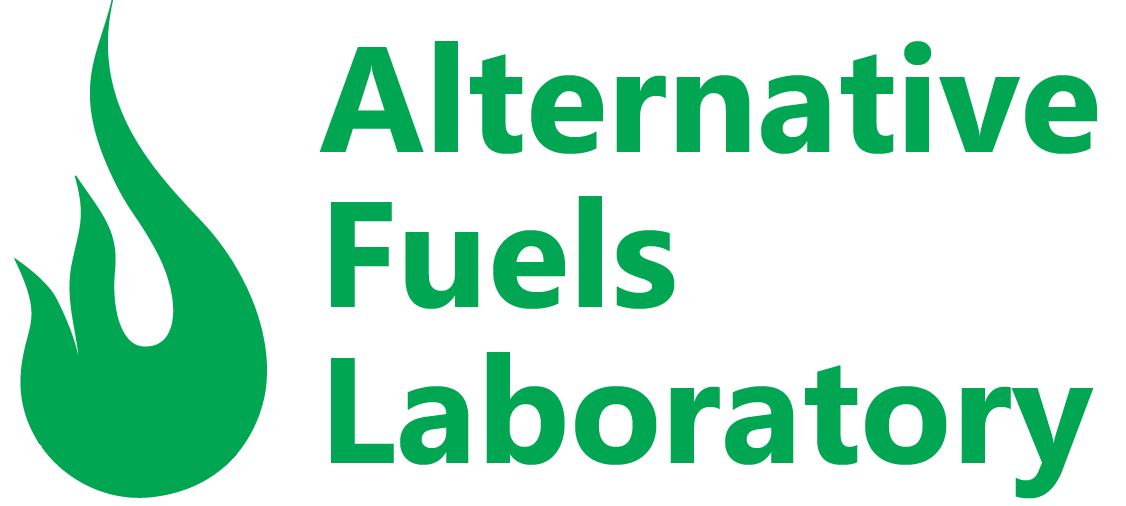Gas-Phase Combustion
Overview
The Gas-phase combustion group studies various fuels (natural gas, biogas, syngas, alcohols, and hydrogen) towards a sustainable transition for gas turbines. Laminar and turbulent flames are stabilized to investigate the combustion phenomena with state-of-the-art laser diagnostics. Mixture reactivity, flame stability, emissions measurements and modelling, and active flame enhancement through plasma-assisted combustion are active areas of research to help develop the next generation of engines and support the transition of the energy sector. Furthermore, a uniquely built high-pressure vessel allows diagnostics of stagnation flames up to 34atm to approach practical applications.
Laminar Flames
A stable, laminar flame is an ideal experimental configuration to study fundamental properties of alternative fuels.

Left: laminar flame illuminated by PIV technique; center: laminar hydrogen flame at phi=0.7 (Durocher et. al. (2021). Back to basics–NO concentration measurements in atmospheric lean-to-rich, low-temperature, premixed hydrogen–air flames diluted with argon. Proceedings of the Combustion Institute, 38(2), 2093-2100.); right: laminar methane flame at phi=0.9 (image courtesy: Marie Meulemans)
The combustion chemistry is studied using a stagnation burner, which provide quasi-1D, stable, lifted, laminar, and flat flames, minimally affected by the burner. Accurate experimentally-measured boundary conditions provide the necessary boundary conditions to simulate these laminar flames to validate thermochemical mechanism and improve combustion modelling. Non-intrusive laser diagnostics provide velocity, temperature, and species concentration measurements (NO, and CH) to characterize the combustion properties.

Left and right: stagnation plate burner; centre: high-pressure rig
The AFL is also actively studying the formation of nitric oxides (NOx), which have been identified as important pollutants in the atmosphere responsible for various human health and environmental problems. A better understanding of the formation mechanisms of NOx is required to control, and reduce, the emissions of these pollutants and develop low-emission engines.
The AFL investigated the formation of NO in various fuel and operating conditions, even at operating pressures up to 16 atm. Recently, experimental investigations focused on isolating, or promoting, the contribution of different formation mechanisms to provide a better understanding of NO formation through its different pathways: prompt-NO, thermal-NO, NNH, N2O, and fuel-NO and their interactions.

Turbulent Flames
Turbulent burners are used to provide flames with combustion physics closer to those found in gas turbine applications. Turbulent counterflow, low-swirl, and high-swirl burners provide various geometry to study the flame reactivity in controlled environment that would be impossible to do in practical systems. Current studies focus on the stability and dynamics of various fuels, reduced in carbon, to further encourage their use in current practical systems.

Laminar versus turbulent CH4-air flame at phi=0.8 (Abbasi Atibeh, E. (2019). The effects of differential diffusion in counter-flow premixed flames with dilution and enrichment.)

Methane and hydrogen turbulent low-swirl flame (image courtesy: Ben Francolini)
Plasma-assisted combustion
Plasma-assisted combustion is a novel strategy to improve flame stability and combustion performances in practical systems. This technology could enable operational flexibility of combustion in gas turbines, providing dynamic control to mitigate flame fluctuations leading to output power heterogeneity. It could also increase flammability of low-grade fuels and therefore reduce their emissions. Current studies of Plasma-assisted combustion are in the understanding of the plasma effect on the flame hydrodynamics and NOx emissions.

Laminar stagnation flame with and without plasma activation (Lambert et. al. (2021). Investigation of the hydrodynamic effect of nanosecond repetitively pulsed discharges on a laminar stagnation flame. Proceedings of the Combustion Institute, 38(4), 6567-6574.)
